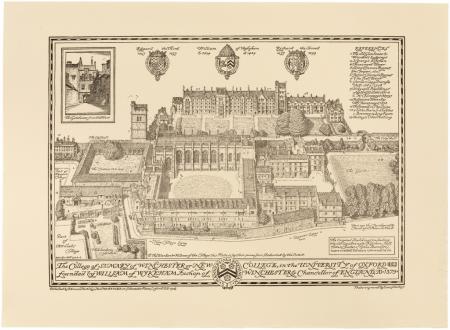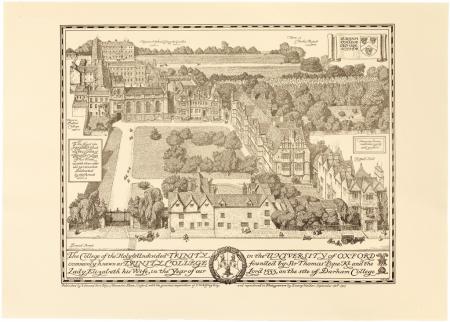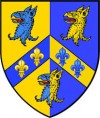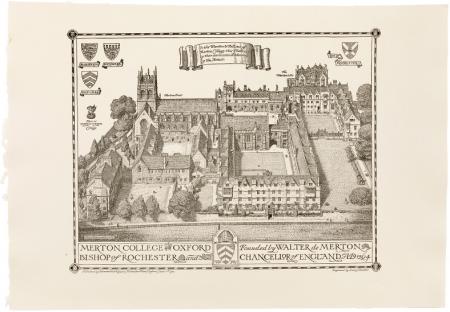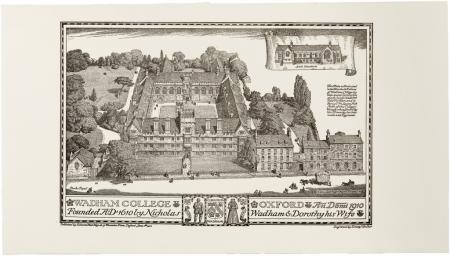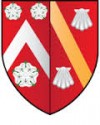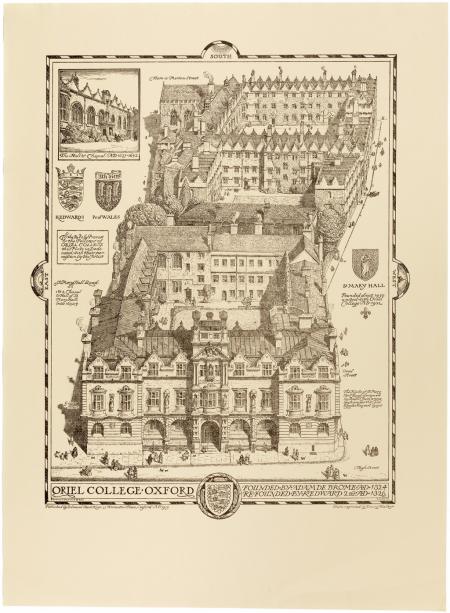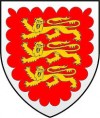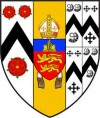The story of the David Loggan’s Oxford College Prints
David Loggan and King Charles II
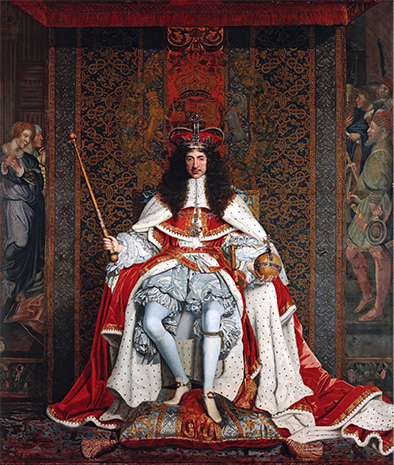
Oxford had been the Royalist capital during the Civil War from 1642. In or around 1660 Charles II commissioned David Loggan to produce drawings of the Oxford Colleges. Loggan’s views combined the facade of each college with a bird’s-eye view of the rest of the buildings and quadrangles hidden from the street view. Loggan personally drew each view, engraved the copper plates, and printed them himself. David Loggan’s copper engravings of Oxford Colleges were published in his Oxonia Illustrata of 1675, to celebrate the restoration of Charles II to the English throne. However, thereafter the plates and prints were acquired by Queen Victoria and became part of the Royal Collection.
Edmund Hort New and
William Morris
Over two-hundred years later Edmund Hort New was an important early 20th century architectural artist and book illustrator; indeed, many would say the illustrator of his day. In 1895 New met William Morris, a textile designer, poet and artist and part of the Arts and Crafts movement. New admired Loggan’s skills immensely and wanted to produce printed plates to show the architectural development of each college over the intervening 230 years. However, New was not an engraver or printer.

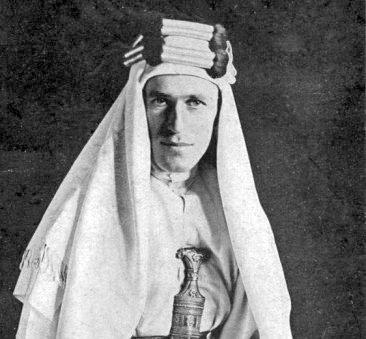
Emery Walker and William Morris
Emery Walker was one of the few printers who had a foot in both camps of Art & Crafts artists and commercial printing, with its modern technical developments. He was also a close friend of William Morris and Walker’s work inspired Morris to create the Kelmscott Press with New, who provided the design work. New went on to illustrate Morris’s two-volume biography taught drawing to T E Lawrence (“Lawrence of Arabia”).
Edmund Hort New and Emery Walker
In 1905 New moved to Oxford where he started to work on a series of drawings of the University of Oxford colleges, a project which occupied him for the rest of his life and remained unfinished. The drawings were then engraved by Emery Walker who created photo-engraved metal alloy plates from New’s pen & ink drawings, so that they could be printed on traditional hand-operated letterpress printers, as used by the Private Press publishers of the period, such as the Kelmscott & Doves Presses. The prints were then sold as the “New Loggan View’prints’.
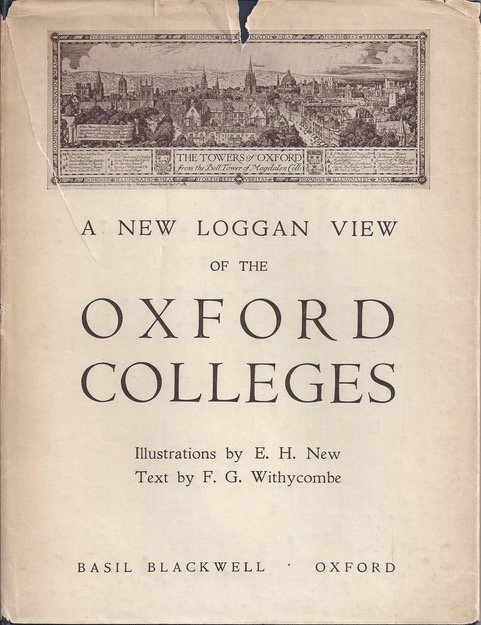
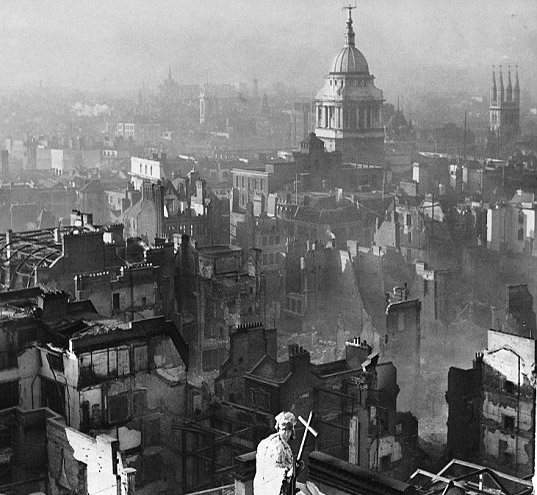
Post 1930s
New’s work on the plates remained unfinished and he died in 1931 being described as “half artist half saint”. The plates passed to Walker who lived at 7 Hammersmith Terrace, London, who himself died in 1933. However, all the plates that were produced between 1905 and 1931(the year of New’s death), were sadly destroyed in the blitz of the Second World War (1940). It is unlikely that more than 200 copies of each view were printed. They are now rarer [and more expensive] than the 17th century Loggan engravings.
Post 2012 Ken Swift & David Carey
Ken Swift came upon the bright idea of reverse engineering plates from the remaining prints. However, using zinc rather than copper because it was a harder metal giving a better indentation. The prints were created using the same method that New and Walker had pioneered i.e. an Albion Press on hand-made paper. David Carey then formed Oxford College Fine Prints and the prints went on sale from the website and are available today. However, they are in short supply and there are clear difficulties (and expenses) in producing more prints by this method – we term these prints the re-strikes.
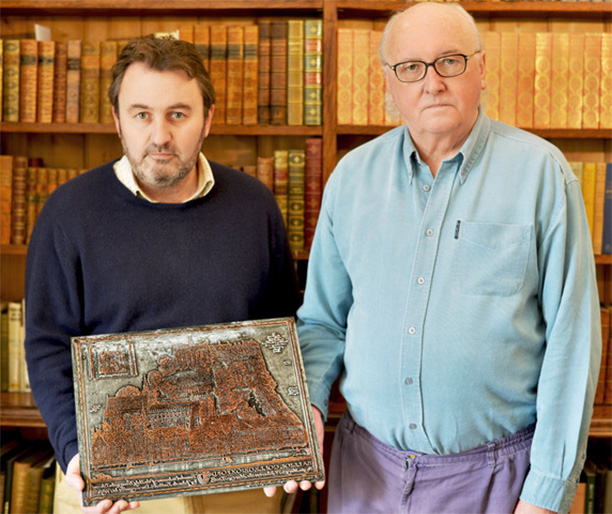
Post 2023 David Carey & Paul Farrar
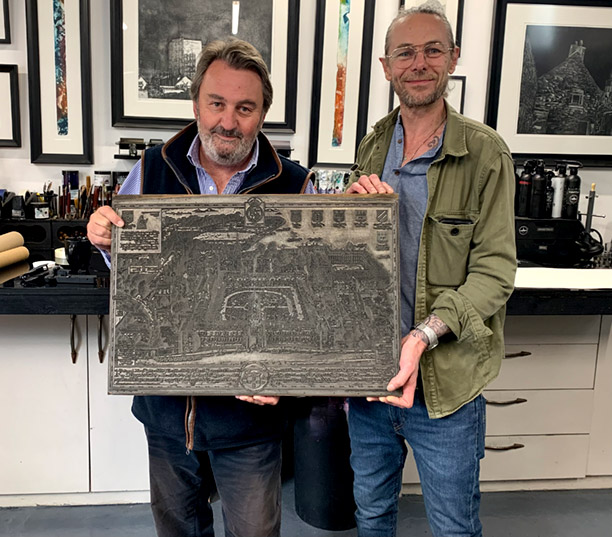
Sadly in ealy 2019 Ken suffered a stroke and then the pandemic arrived. David in his role as a consultant doctor and barrister became heavily engaged in Covid and non-Covid matters. There was simply no time for OCFP. However during 2023 David decided to re-invigerate OCFP. A new website was created and OCFP started to embrace social media technologies. However, David did not wish abandon traditional printing for digital methods or compromise on print or paper quality; indeed, he wanted to improve it. Accordingly, he collaborated with Paul Farrar (see ‘About OCFP’), who sourced a modern-day equivalent of the Albion press to produce superb prints on paper of exceptional quality.
So now, you can acquire high quality prints of Loggan’s Oxford Colleges, from the very same zinc plates used for the re-strikes that were created for an Albion press to print on high quality paper. Sold exclusively by Oxford College Fine Prints (OCFP).

